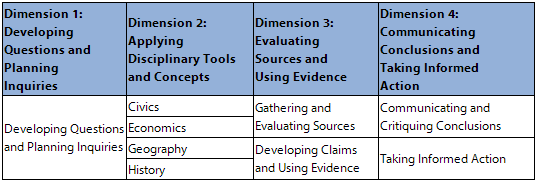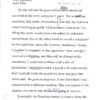Teacher Guide to Stories of Survival
For teachers of the Social Studies, the College, Career, and Civic Life (C3) Framework provides excellent guidance for how to teach this subject.
For educators who are not already familiar with the framework and wish to know more, go here.
For teachers of English Language Arts (ELA), we’ve prepared this document that references several standards that relate to the Holocaust and to using the resources on this site.
Using Stories of Survival
We don’t intend to tell you, the educator, how to use this web site. We hope that it will be counterintuitive.
Throughout the web site, students will find many HYPERLINKED words and phrases. These will take them to relevant and appropriate pages for more information. At the same time, we have embedded PRIMARY SOURCE DOCUMENTS (photos, newspaper articles, documents, videos) for them to read and evaluate. [See Teaching The Holocaust Using Photographs] Additionally, we have included a page of recommended books/web resources: you may wish to consider asking your school library media specialist to consider acquiring one or more for further study and investigation.
Students studying the Holocaust are more often engaged when they have a story to follow. The stories of Felix & Bluma Goldberg are ones we hope will engage your students. First and foremost, you should watch and listen to their video testimonials (captured by South Carolina ETV). Since they are approximately one hour in length, you may wish to select the sections that meet your needs. The videos and transcripts of the interviews can also be found in the Recommended Resources section. (See Videos About The Holocaust.)
We think another way to engage students is to propose a series of questions (like the ones below) and let them search and research the answers. They can do that using primary sources, photos in both the timeline and interactive map on this web site.
Questions for Student Consideration
- What were the prevailing attitudes towards Jews in Poland?
- How did non-Jews treat Jews and why?
- Who were the Goldbergs? Where were they born?
- What was life like for Jews in Poland in the 1930’s and 1940’s before World War II?
- How did Felix and Bluma get caught up in “the Holocaust”?
- Were they exposed to anti-semitism?
- Where did their captures occur? What happened to them? What happened next?
- What role did “displaced persons”(DP) camps play?
- What kept them going?
- How did they survive?
- After the war, how did they meet?
- How did they get from war-torn Europe to the United States?
These and other questions can be answered herein.
Vocabulary: Words your students may encounter during their research and readings
Anti-semitism; aryan; concentration camp; displaced persons; Final Solution; forced labor; gas chamber; genocide; Gestapo; ghetto; Nazi; pogrom; propaganda; resistance; shtetl; Shoah; SS; Third Reich; Torah
More Activity Recommendations:
- Have your students select one of the other SC survivors, using the Seared Souls interview database. They should listen to the interview, making notes. Then have them create an historical timeline and geographic map, similar to what we’ve done here.
- Task your students with researching “Displaced Persons” in regards to WWII. Have them create a multi-media presentation that includes their research findings.
- Have your students locate survivors (and their stories) from the same towns in which Bluma and Felix were born.
Have them compare and contrast experiences. What was the same; what was different? - How did the media at the time (radio, TV, newsreels, newspapers) report on the Holocaust? What limitations might the media have had that impeded their work?
- With the aide of a librarian, have your students research how the Holocaust was reported on by the major current event publications of the time; THE NEW YORK TIMES, LIFE MAGAZINE, SATURDAY EVENING POST MAGAZINE, TIME MAGAZINE, and NEWSWEEK MAGAZINE.
Recommended Resources:
- Stories of Survival: Recalling Felix & Bluma Goldberg and Their Long Road to Columbia (page 21, 2021 Holocaust Remembered)
- Felix Goldberg Gives Talk On Yom Hashoah 2000
- Resources & Recommendations for Teaching The Holocaust At the Elementary Level
- South Carolina Voices: Lessons From The Holocaust (SC Department of Education)
- Echoes & Reflections: Teaching The Holocaust. Inspiring The Classroom
- He Defeated Hitler By Surviving Felix Goldberg Story (see page 10)
- A Tale of Two Sisters (see page 10, Holocaust Remembered, Spring 2014)
- Teaching About the Holocaust A Resource Book for Educators
- Holocaust Remembered. Education Supplements published by The State Newspaper
- Holocaust Remembrance Teacher Resources (SC ETV Knowitall.org)
- Holocaust Remembrance Day Lesson Plans & Activities (PBS)
- Archive of Lesson Plans from SC Summer Holocaust Teacher’s Institutes
- The Holocaust: Our Responsibility to Remember (2013, Charleston Post & Courier)
- Tomorrow Never Came (2012, Charleston Post & Courier)
- Holocaust Special Collection (Charleston Co. Public Library)
- Analyzing Holocaust Era Photographic Images (see page 8)
- The Holocaust: Remembering The Past-Safeguarding the Future (NIE)
- The Holocaust We Are Witnesses (Sun Sentinel NIE)
- Online Teacher Resources (NC Public Schools)
- Handbook for Teachers: Guidelines for Teaching About the Holocaust (Task Force for International Cooperation on Holocaust Education, Remembrance, and Research)
- A Teacher’s Guide to The Holocaust (University of South Florida)
- Facing History and Ourselves
- The World Must Know The History of the Holocaust as Told In the US Holocaust Memorial Museum
- The Holocaust History Project (archive)




